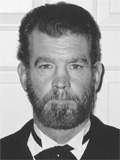We were speculating about a month ago about the direction the Washington Senate race has been taking, and whether it might be about to undertake another shift. Early indications are that it has.
This is a contest with a series of distinct movements, from uncertainty about Democratic Senator Maria Cantwell's popularity in her state, to varied receptions on the challenge entry of Republican Mike McGavick, to a strong pitch of favorable headlines and polls early this year, to several months of erosion and steady McGavick gains in the spring and summer. The question was, would Cantwell take hold of what looked like drift and turn the situation around?
We wrote that about the time her campaign started to kick its engine into gear, after a long stretch of what looked like coasting. McGavick's campaign, operating on a smaller scale, has looked for active, from its ad buys to the promotion around his bus tour across the state. he gave off a sense of energy and action, while Cantwell was only fitfully visible in the state.
In the last month, there's been pickup. She's been more visible. Her campaign has gotten its ad buys underway. The blast-back at McGavick, up to and including a web site parodying McGavick's tour, is up, and so has been the Democratic questioning and responses at McGavick's campaign stops. (His bus tour still looks like a good idea, but the Democrats have been hard at work minimizing its value to him.) The only significant primary challenge to Cantwell (not one that could realistically deny her the nomination, but could do longer-term damage) was wiped out with the hiring of that candidate into the Cantwell campaign. That last maneuver may have generated mixed headlines (buying off your opponent?), but it probably restored a sense that Cantwell isn't to be trifled with.
Taken together, that may explain some of the change in polling trends. At the beginning of the year, Rasmussen Reports polling said, she registered 51% to 26% for McGavick - a 15% lead. That withered away until by mid-June she was down to 44% to 40% for McGavick - a four-point lead, within the margin of error.
Then she started to engage in the campaign again, the Rasmussen poll just out puts her at 48% to 37% for McGavick - an 11% lead. Her personal favorability is up too, to 51%.
None of this makes the race a done deal yet. But what looked like shaky ground for Cantwell looks a bit more solid now, provided she maintains the momentum.

 The snap presumption seems to be that no, it doesn't. After rummaging through the stats, the area and the candidate situation, we'd conclude that the seat likely will remain Republican next term. Like but not definitely - Kropf's leave-taking has opened an opportunity for Democrats that hadn't existed previously.
The snap presumption seems to be that no, it doesn't. After rummaging through the stats, the area and the candidate situation, we'd conclude that the seat likely will remain Republican next term. Like but not definitely - Kropf's leave-taking has opened an opportunity for Democrats that hadn't existed previously. Rawlins is a truly experienced old hand at university administration. His years at WSU go back four decades, and
Rawlins is a truly experienced old hand at university administration. His years at WSU go back four decades, and  The
The  This makes at least 15 elections for the former Michael Patrick Shanks - now legally Mike the Mover, and yes that is what he does for a living - and zero wins. Or even near-wins.
This makes at least 15 elections for the former Michael Patrick Shanks - now legally Mike the Mover, and yes that is what he does for a living - and zero wins. Or even near-wins.